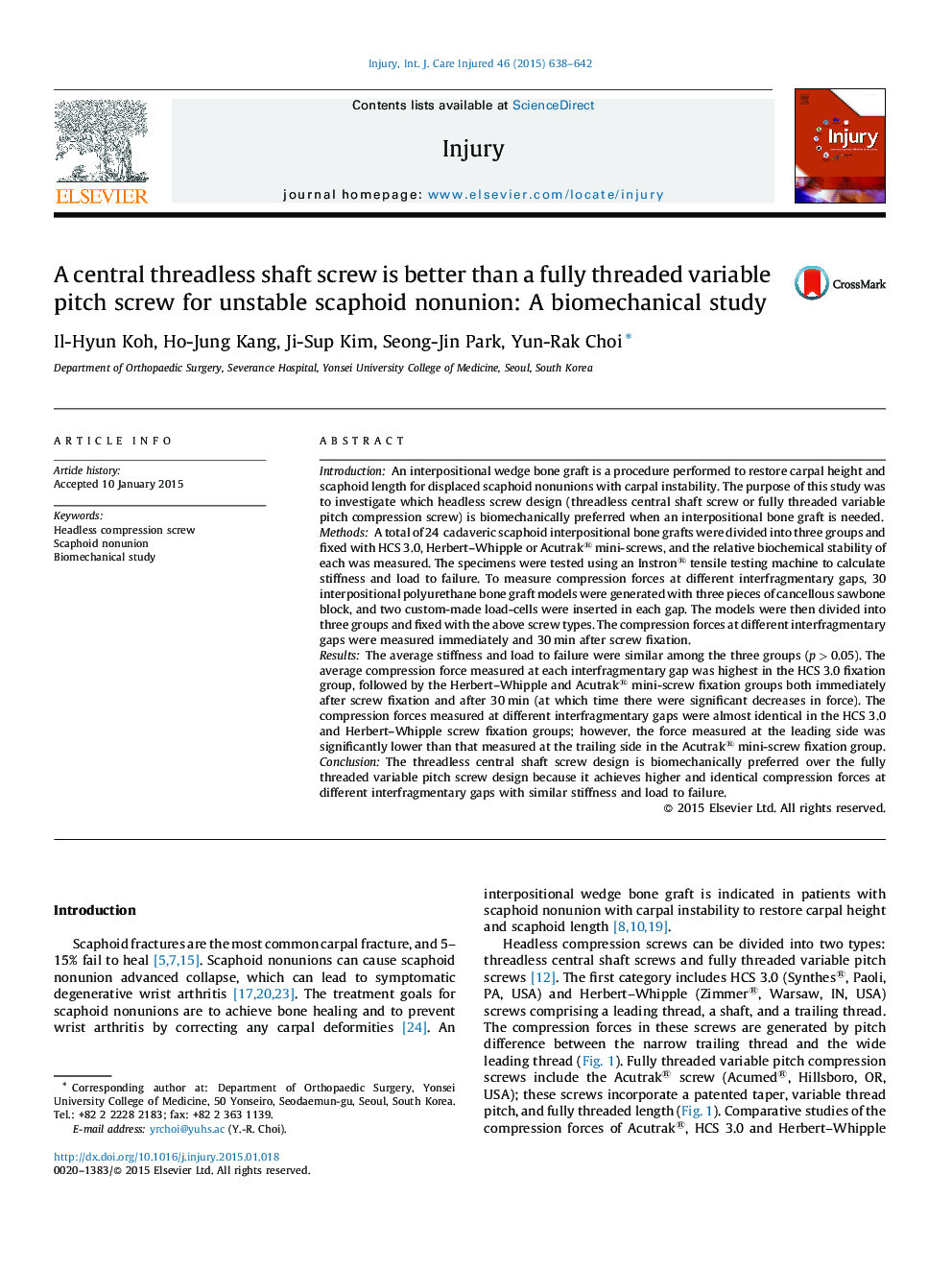| Article ID | Journal | Published Year | Pages | File Type |
|---|---|---|---|---|
| 3239058 | Injury | 2015 | 5 Pages |
IntroductionAn interpositional wedge bone graft is a procedure performed to restore carpal height and scaphoid length for displaced scaphoid nonunions with carpal instability. The purpose of this study was to investigate which headless screw design (threadless central shaft screw or fully threaded variable pitch compression screw) is biomechanically preferred when an interpositional bone graft is needed.MethodsA total of 24 cadaveric scaphoid interpositional bone grafts were divided into three groups and fixed with HCS 3.0, Herbert–Whipple or Acutrak® mini-screws, and the relative biochemical stability of each was measured. The specimens were tested using an Instron® tensile testing machine to calculate stiffness and load to failure. To measure compression forces at different interfragmentary gaps, 30 interpositional polyurethane bone graft models were generated with three pieces of cancellous sawbone block, and two custom-made load-cells were inserted in each gap. The models were then divided into three groups and fixed with the above screw types. The compression forces at different interfragmentary gaps were measured immediately and 30 min after screw fixation.ResultsThe average stiffness and load to failure were similar among the three groups (p > 0.05). The average compression force measured at each interfragmentary gap was highest in the HCS 3.0 fixation group, followed by the Herbert–Whipple and Acutrak® mini-screw fixation groups both immediately after screw fixation and after 30 min (at which time there were significant decreases in force). The compression forces measured at different interfragmentary gaps were almost identical in the HCS 3.0 and Herbert–Whipple screw fixation groups; however, the force measured at the leading side was significantly lower than that measured at the trailing side in the Acutrak® mini-screw fixation group.ConclusionThe threadless central shaft screw design is biomechanically preferred over the fully threaded variable pitch screw design because it achieves higher and identical compression forces at different interfragmentary gaps with similar stiffness and load to failure.
